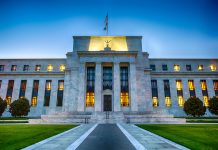Despite the surprise on this move we retain our forecast that the terminal rate in this cycle will be 3.6%, with a series of 25 basis point moves out to March 2023 (previously February 2023).
The Reserve Bank Board decided to increase the cash rate by 25 basis points to 2.60%.
This was a lower increase than we had expected and is justified by “The cash rate has been increased substantially in a short period of time. Reflecting this, the Board decided to increase the cash rate by 25 basis points this month as it assesses the outlook for inflation and economic growth in Australia.” We had anticipated one last move of 50bps.
The Governor noted to the House of Representatives Standing Committee on Economics on September 16, “at some point we’ll obviously not need to be increasing rates by 50 basis points at each meeting, and we’re getting closer to that point.” He clearly delivered on that observation despite a significant lift in global interest rates and the ambiguity as to whether that point had actually been reached.
The Board also changed the guidance from “The Board expects to increase interest rates further over the months ahead” (in September) to “The Board expects to increase interest rates further over the period ahead.” However, in an earlier paragraph the Statement refers to “FURTHER INCREASES are likely to be required over the period ahead” (my emphasis).
While the key theme from the September Statement, “the full effects of higher interest rates yet to be felt in mortgage payments” has been repeated in the October Statement strong emphasis has been given to the global economy.
In the key final paragraph, the Statement notes that “The Board… is closely monitoring the global economy, household spending and price-setting behaviour”. In the September Statement the “check list” of what it was monitoring was not clearly set out in the final paragraph. While the reference to the global economy was limited to “the outlook for global economic growth has deteriorated.”
However, the September Statement noted, “an important source of uncertainty continues to be the behaviour of household spending “– he points out the interaction of low Consumer Confidence; declining house prices on the one hand and people finding jobs; gaining more hours of work and receiving higher wages.
The September Statement also points to “The Board will continue to pay close attention to both the evolution of labour costs and the price setting behaviour of firms in the period ahead.”
There seems to a confidence building around Australia’s capacity to avoid a strong lift in wages growth. “Wages growth… remains lower than in other advanced economies where inflation is higher.”
That confidence is likely to be misplaced as we move further into 2022 and 2023.
Certainly, the argument about lower inflation does not align with the official forecasts. For example, the RBA is forecasting headline inflation to be 7.75% by end 2022 compared to the recent end year forecasts from the FOMC (Federal Open Market Committee) of 5.4% for the PCE (the current PCE is running at around 2 ppt’s below headline inflation).
Conclusion
Westpac has expected that the terminal rate in this cycle will be 3.6%. That involved a 50 basis point increase in October to be followed by three 25 basis point increases in November; December; and February.
Today’s decision does not change our view that the sequence of increases will revert to 25 basis point increases in November; December; and February.
However, it seems unlikely that slowing the pace of increase a month earlier than expected will mean a lower terminal rate.
We still expect the federal funds rate to peak at 4.625%, holding the AUD at around USD 0.65 over the course of 2022.
We do not share the RBA’s confidence around the containment of wage pressures and expect that economic growth will have to slow to 1% in 2023 to achieve an acceptable slowdown in inflation and wages growth.
By engineering this positive surprise with today’s decision the end result is likely that the tightening cycle will need to be extended into March when another update on wages growth will be received by the RBA.
Consequently,we retain our forecast that the cash rate will peak at 3.6% although now that the sequence of increases has slowed to 25 basis points per meeting the last increase is now likely to be March rather than February.












